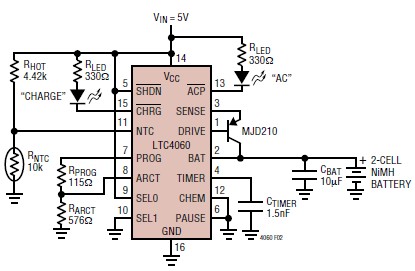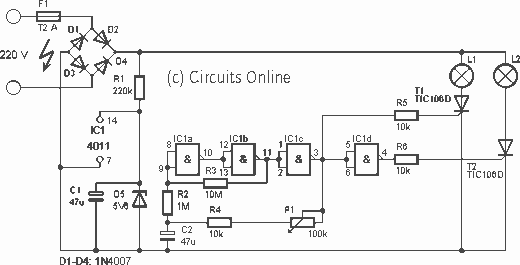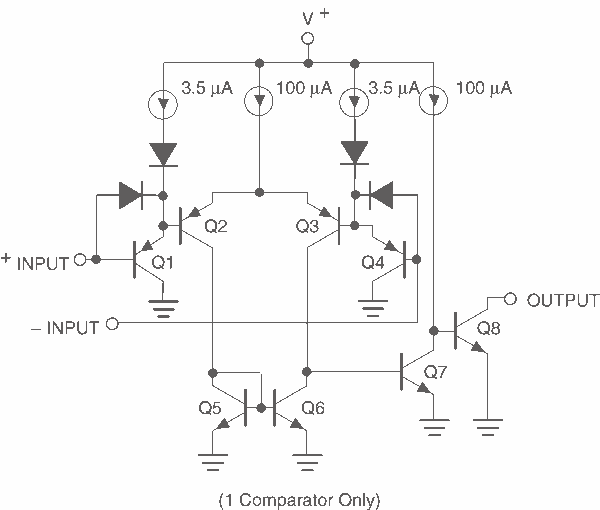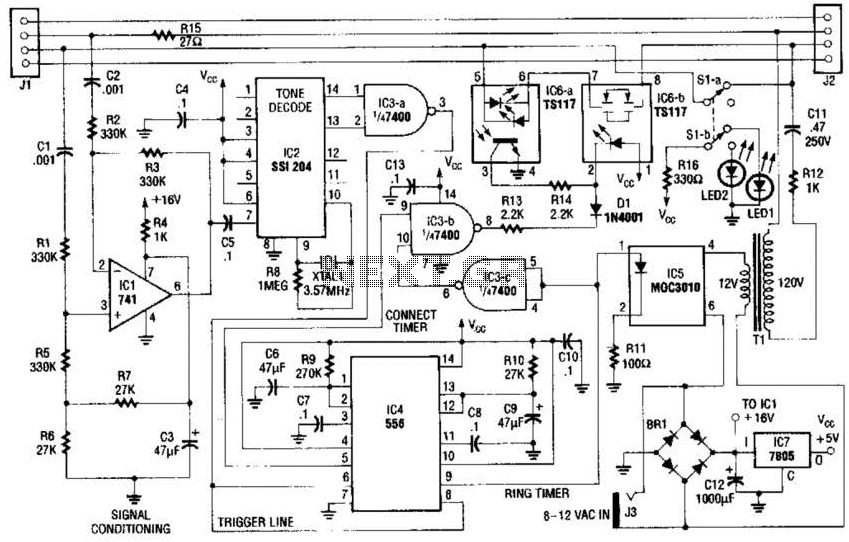
Three phase bridge type inverter circuit diagram

The figure illustrates a traditional three-phase bridge inverter circuit. Components VT1 to VT6 represent thyristors, while L1 to L6 are commutation reactors. Capacitors C1 to C6 serve as commutating capacitors, and the thyristor shut-off circuit is composed of two parts. Diodes VD1 to VD6 function as feedback diodes. The operation of the thyristor is based on a three-phase AC input power supply.
The three-phase bridge inverter circuit is a critical component in various applications such as motor drives, renewable energy systems, and power conversion technologies. The configuration employs six thyristors arranged in a bridge format, allowing for the conversion of three-phase AC input into a controlled DC output. The thyristors (VT1 to VT6) are semiconductor devices that can control the flow of current, enabling the inverter to switch the output voltage polarity and generate a variable frequency output.
Commutation reactors (L1 to L6) are integral to the circuit, providing the necessary inductance to facilitate the commutation process, which is essential for turning off the thyristors. These reactors help to manage the transient conditions that arise during switching, ensuring stable operation and reducing voltage spikes that could damage the components.
The commutating capacitors (C1 to C6) work in conjunction with the reactors to store and release energy, aiding in the proper turn-off of the thyristors. The feedback diodes (VD1 to VD6) provide a path for the current to flow when the thyristors are turned off, preventing reverse voltage issues and ensuring safe operation.
The thyristor shut-off circuit, which consists of two parts, is crucial for managing the timing of the thyristor operation. This circuit ensures that the thyristors are turned off appropriately to prevent unwanted conduction and to maintain efficient operation of the inverter.
Overall, this three-phase bridge inverter circuit exemplifies a robust design capable of handling varying loads while providing reliable power conversion from AC to DC. The careful selection and arrangement of components are essential for achieving optimal performance and longevity of the system.As shown in the figure is the traditional three-phase bridge type inverter circuit:VT1?VT6 is thyristor, L1?L6 is commutation reactor, C1?C6 is commutating capacitor, the thyristor shut-off circuitconsists of the two parts. VD1?VD6 is feedback diode. According to the work principle of the thyristor, it based on the 3-phaseAC inputpower supply, If the thyr..
🔗 External reference
The three-phase bridge inverter circuit is a critical component in various applications such as motor drives, renewable energy systems, and power conversion technologies. The configuration employs six thyristors arranged in a bridge format, allowing for the conversion of three-phase AC input into a controlled DC output. The thyristors (VT1 to VT6) are semiconductor devices that can control the flow of current, enabling the inverter to switch the output voltage polarity and generate a variable frequency output.
Commutation reactors (L1 to L6) are integral to the circuit, providing the necessary inductance to facilitate the commutation process, which is essential for turning off the thyristors. These reactors help to manage the transient conditions that arise during switching, ensuring stable operation and reducing voltage spikes that could damage the components.
The commutating capacitors (C1 to C6) work in conjunction with the reactors to store and release energy, aiding in the proper turn-off of the thyristors. The feedback diodes (VD1 to VD6) provide a path for the current to flow when the thyristors are turned off, preventing reverse voltage issues and ensuring safe operation.
The thyristor shut-off circuit, which consists of two parts, is crucial for managing the timing of the thyristor operation. This circuit ensures that the thyristors are turned off appropriately to prevent unwanted conduction and to maintain efficient operation of the inverter.
Overall, this three-phase bridge inverter circuit exemplifies a robust design capable of handling varying loads while providing reliable power conversion from AC to DC. The careful selection and arrangement of components are essential for achieving optimal performance and longevity of the system.As shown in the figure is the traditional three-phase bridge type inverter circuit:VT1?VT6 is thyristor, L1?L6 is commutation reactor, C1?C6 is commutating capacitor, the thyristor shut-off circuitconsists of the two parts. VD1?VD6 is feedback diode. According to the work principle of the thyristor, it based on the 3-phaseAC inputpower supply, If the thyr..
🔗 External reference





